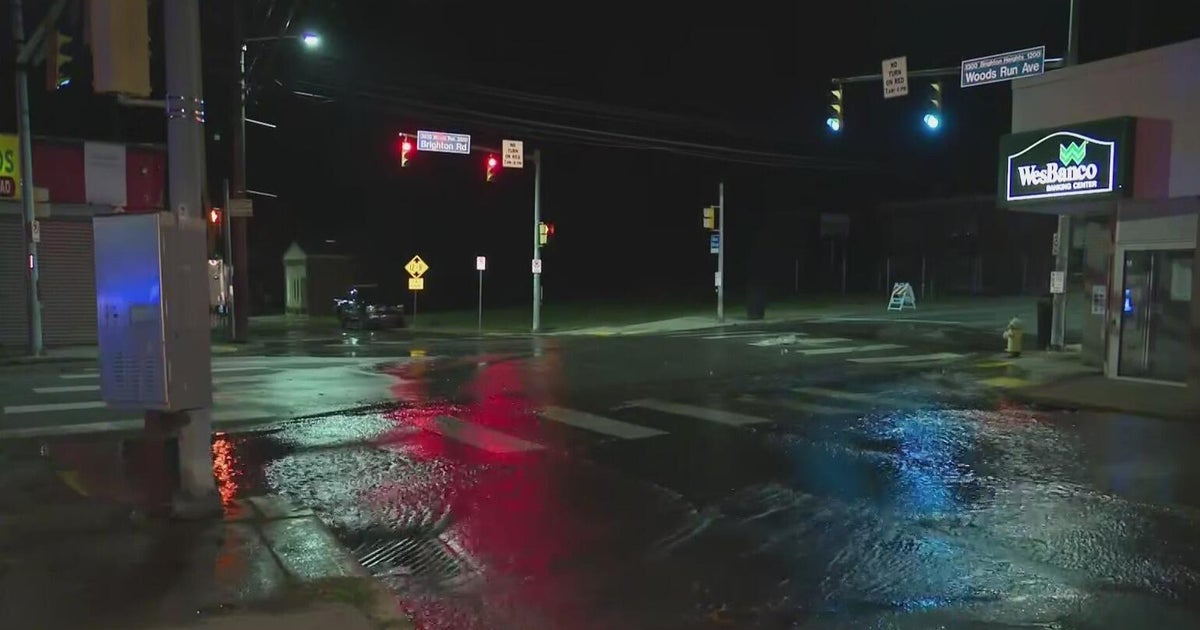New Technology Helping Water Rescue Teams Save More Lives
Follow KDKA-TV: Facebook | Twitter
PITTSBURGH (KDKA) - Myrtle Beach is loved for its sand, its surf, and for miles of beachfront property. Starting today, the Grand Strand will begin using robotic life saving devices.
Meet EMILY. She is already at work in Australia, Europe and on the beaches of Malibu in California.
The Myrtle Beach Fire Department just bought four. They cost a little less than $15,000 each, but are a great way to get to someone in danger quickly. They can travel over and through waves at 30 miles per hour -- and they are controlled remotely from the beach.
Lt. Jonathan Evans, Myrtle Beach Fire Department says the company likes how portable the robotic lifesaving unit is.
"An individual can take this out from the back of the truck, toss it into the water, and then have it going out there very quickly," Evans said.
Rescue workers control the speed and the direction of the EMILY unit from a remote controller on the beach or from a boat or helicopter.
When EMILY arrives at the trouble spot, it has enough buoyancy to keep four or five distressed swimmers afloat until help arrives.
KDKA-TV showed George McBriar, the Chief of the Blawnox Volunteer Fire Department, a video about how EMILY can be used. He has spent 30 years running water rescue teams in Allegheny County.
Here is what he thought:
"I think the potential for it is great. Given the proper scenario, it would be a great tool, and we try to recognize everything we use as an additional tool in the box," McBriar said.
In western Pennsylvania, those teams utilize a lot of tools.
Chief McBriar opened the tailgate on what of the rescue rigs used in Blawnox.
"We have portable side scan sonars. We have underwater cameras. We have just a multitude of tools, and that's all they are. And they are only there to help our personnel and save them," McBriar said.
If your only experience with navigating the rivers of western Pennsylvania comes from driving over them on one of our many bridges, looks can be deceiving. The water often looks calm and still, but there are fast moving currents in many parts of the rivers.
It's a whole different story around the locks and dams. If you are a swimmer, or if you are in a broken down boat, the currents can quickly pull you downstream into danger. That creates a big time problem for swiftwater rescue teams.
"If a canoe tips over on a lake, the people will climb on over it and just stay there until they get some help," says McBriar. "You can't do that in a river because it's moving water and sooner or later you are going to end up in trouble."
The locks and dams on the Allegheny, Monogahela and Ohio rivers present a whole new set of challenges for rescue teams. We have seen the tragic stories of boaters drowning in the boil around the dams. We have seen it happen many times.
While a device like EMILY seems like it could help save a distressed swimmer, Chief McBriar says around here there will always be people involved.
"I wouldn't feel comfortable sending out a drone or anything else with out backup personnel on equipment prepared to go out and execute a rescue," he said.
The EMILY units aren't the only technology assets being used by lifesaving operations.
In less than a minute, crews can fly a drone from the Blawnox Fire Department Building on Freeport Road out over the Allegheny River. The high-definition camera allows crews to see exactly what rescue crews will face when they get on the water a get to work.
The camera can tilt up and down to see a wide area. The operator does have to point the drone in the direction they want to see.
The drone has a five-mile range. Yet just like the EMILY unit, the drone needs a person to tell it where to go. McBriar says the business of lifesaving isn't ready to be fully automated.
Carnegie Mellon University is doing a lot of work with artificial intelligence and robotics, but McBriar says there is a human side of rescue work that can't be replaced.
"I think you are always going to have that human element and you are going to have to put them into the danger zone," McBriar said. "Can we lessen that danger? Absolutely, and I think the drones, all of those things are a great start and are helping us get here."
So just like a carpenter uses a hammer -- or a gardener uses a rake, water rescue crews have to decide how best to use the technology at their disposal today.
"As the water rescue services have advanced, we have acquired a whole bunch more tools, and it's just a matter of knowing what you have and what you are capable of doing with them," McBriar said.



